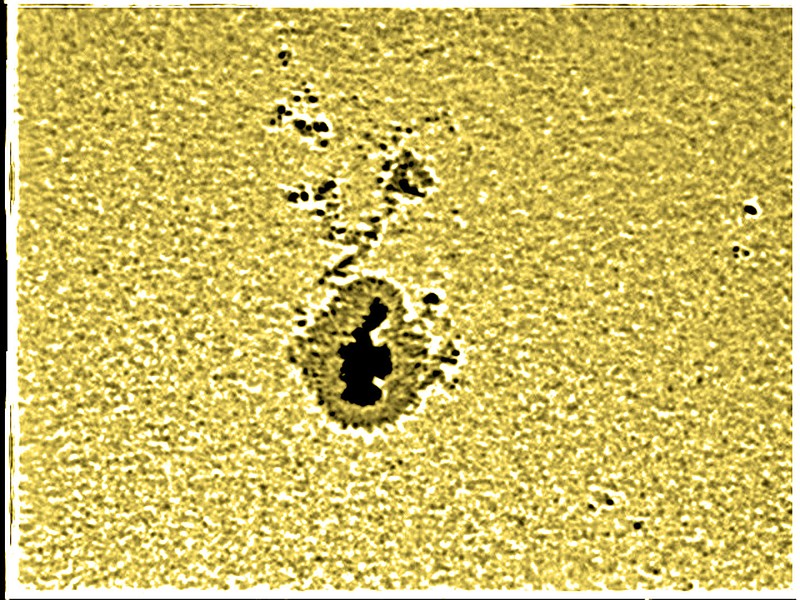Each month, I must make a decision as to what I will write about for the coming month. This is sometimes not an easy choice because, in a given month, several interesting things might be going on in the night sky at the same time. This month, the decision was easier because of happenings on the sun.
I subscribe to several amateur astronomy blogs, and it came to my attention that a large sunspot recently appeared on the sun. I set up one of my scopes with its very special safety filters to see if I could get a photograph of this large sunspot. I have included the image I took in this column.
The sun, our star, is about 865,000 miles in diameter. On the scale of star sizes, our star is very ordinary -- even a bit small. Scientists think it is about 4.5 billion years old and has about an equal period of burning time left. Thus, it is middle-aged and rather stable -- lucky for us!
The sun follows an 11-year sunspot cycle. At the least active part of the cycle, very few sunspots appear. We have just come through that period, but now the sun is climbing up from its low point and more sunspots are appearing. I have been watching closely, and the spot I photographed is the biggest one I have seen since the nadir of the cycle.
Never, ever, look at the sun directly, and certainly not with binoculars or a telescope unless they are equipped with filters that block the sun 99% -- as mine do. You can easily burn your retinas to the point of blindness!
When the sun can be viewed safely, it is grainy. The graininess is caused by cells or bubbles of hot plasma, welling up from the interior of the sun and then discharging much of their energy to empty space. When they have discharged their energy, they are a bit darker, so what you see is a "salt and pepper" effect. This shows up clearly in the included image.
Sunspots themselves are poles of very powerful magnetic fields. The sun generates very strong magnetic fields centered at its poles and these encircle the sun. As the sun rotates on its axis, these magnetic field lines become twisted and broken. They fall to the sun's surface and form smaller, but still enormous, poles with positive and negative charges. They are black because these poles push out surface material having the same charge as the sunspot/pole. [Remember from science class: like charges repel one another.]
The sunspot you see in the image is at least 25,000 miles in length -- its whole area could contain five earths! The largest one I have seen was about 85,000 miles across -- about 1/10th. the diameter of the sun. Stupendous forces are at work on our mild-mannered little sun! We, mere humans, cannot really take such processes fully into mind.
Look for Venus and Saturn close together on the southeast horizon just after sunset. Saturn will disappear from the evening sky and reappear at dawn. Venus will get brighter and brighter as it rises higher in the sky in spring.
Comet C/2022 E3 may become bright enough in February to see with the naked eye or binoculars. It will be near the Big Dipper. Look up this comet on the internet to see its position in the sky during the beginning of February. It is green in color and could be a wonderful sight.
The sky is full of wonders -- but you can't enjoy them without looking! Get out there ...
David Cater is a former faculty member of JBU. Email him at [email protected]. Opinions expressed are those of the author.

